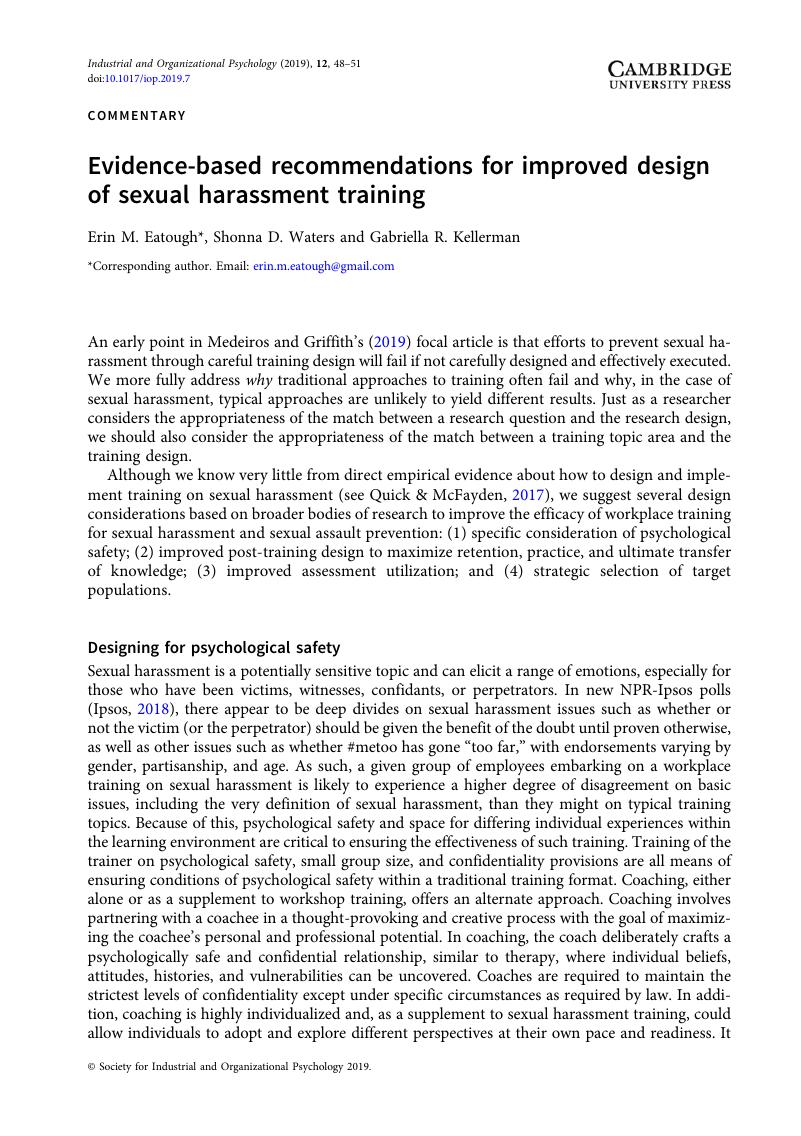Crossref Citations
This article has been cited by the following publications. This list is generated based on data provided by Crossref.
Cubrich, Marc
2020.
Expanding the focus: How considering gender and sexual minority experiences can improve sexual harassment training.
Industrial and Organizational Psychology,
Vol. 13,
Issue. 2,
p.
178.
Sadeh-Sharvit, Shiri
Giron, Jonathan
Fridman, Shir
Hanrieder, Maxine
Goldstein, Shany
Friedman, Doron
and
Brokman, Shir
2021.
Virtual Reality in Sexual Harassment Prevention.
p.
87.
Do, Hyo Jin
Yang, Seon Hye
Choi, Boo-Gyoung
Fu, Wayne T.
and
Bailey, Brian P.
2021.
Do You Have Time for a Quick Chat? Designing a Conversational Interface for Sexual Harassment Prevention Training.
p.
542.
Atwater, Leanne E.
Sturm, Rachel E.
Taylor, Scott N.
and
Tringale, Allison
2021.
The era of #MeToo and what managers should do about it.
Business Horizons,
Vol. 64,
Issue. 2,
p.
307.
Wu, Linfeng
and
Chen, Karen B.
2024.
Gender Swap in Virtual Reality for Supporting Inclusion and Implications in the Workplace.
IISE Transactions on Occupational Ergonomics and Human Factors,
p.
1.



